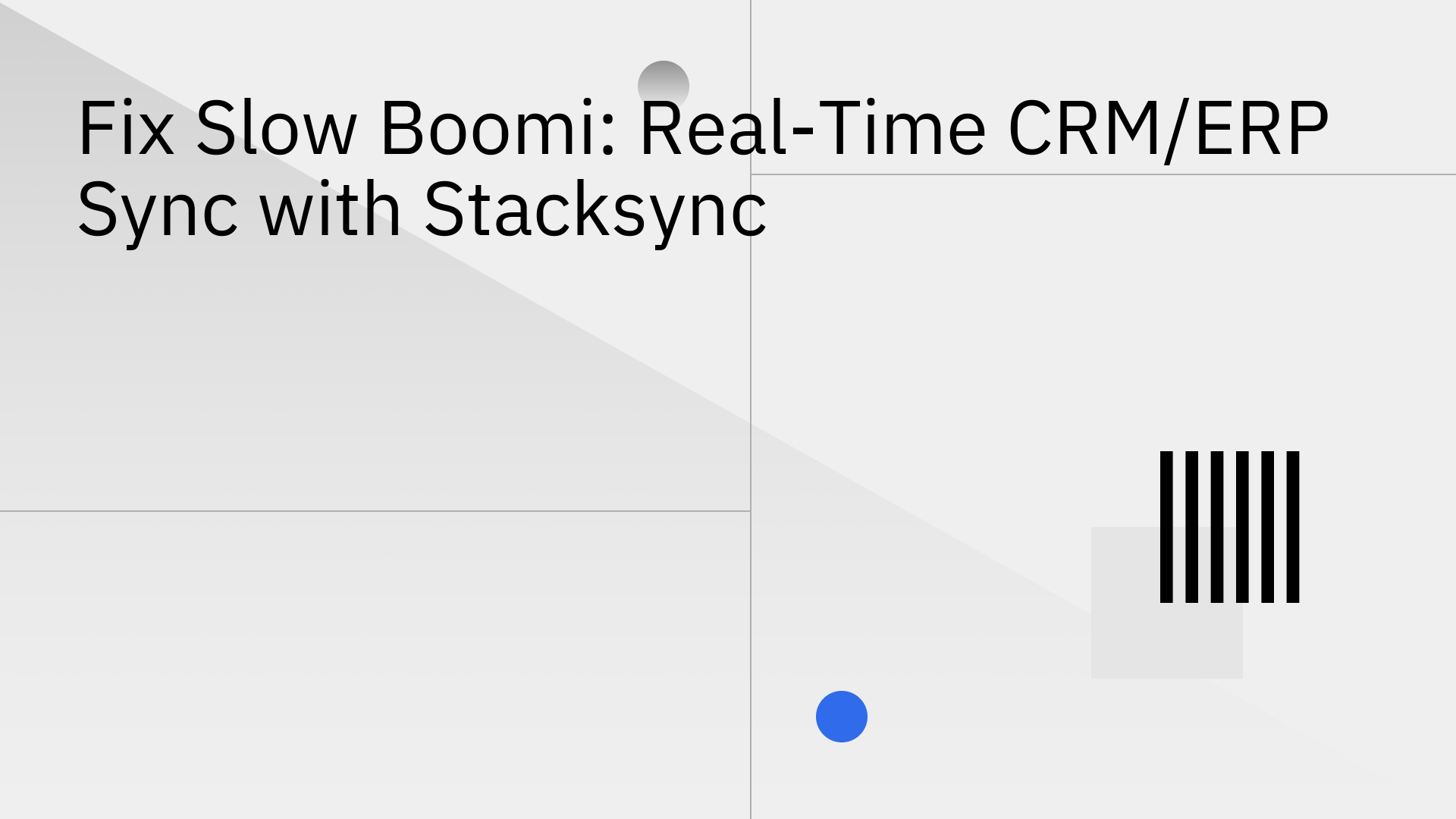
Integrating your Customer Relationship Management (CRM) and Enterprise Resource Planning (ERP) systems is essential for a complete view of your business, from the first sales contact to final invoicing. Many organizations use Dell Boomi, a popular Integration Platform as a Service (iPaaS), to connect these systems [4]. However, a common and critical issue arises: many find their Boomi integration is too slow for CRM/ERP sync, as it often relies on batch processing, which sends data in delayed groups rather than instantly.
This latency isn't just a technical glitch. It causes operational bottlenecks, leads to decisions made on outdated information, and creates a disconnected customer experience. In contrast, Stacksync provides a modern solution built specifically for real-time, two-way data synchronization, effectively solving these performance issues.
Slow CRM-ERP sync performance in Boomi often comes down to its core design and how it's typically used. While Boomi is a capable tool for connecting different application workflows, its architecture isn't optimized for the continuous, instant data replication modern businesses require [8].
Boomi's architecture is primarily built on scheduled, batch-based processing. This means that instead of syncing data the moment it changes, it collects changes and sends them over in a large batch at a set interval for example, once every hour. This approach inherently creates a delay.
To address this, Boomi offers a "Low Latency Mode." However, this feature comes with a major trade-off: it reduces detailed logging to speed up the process. This makes it extremely difficult to troubleshoot problems when a sync fails, as you have less information about what went wrong [7]. This design is better suited for triggering a sequence of actions (orchestration) rather than keeping two large systems in constant, perfect alignment (replication).
On top of its architectural limitations, Boomi’s performance can be hindered by common setup mistakes. Even on a low-code platform, it’s easy to build integrations that become slow and inefficient [5].
When your CRM and ERP data is out of sync, the impact is felt across your entire organization. It's not just a technical headache; it's a direct hit to your operational efficiency and strategic agility.
Delayed data creates daily friction and costly mistakes for your teams. For example:
These are just a few of the 7 critical sync CRM challenges and how modern integration platforms solve them that slow, one-way integrations create.
Your business intelligence is only as good as the data powering it. When your sync runs in batches, your reports are always out of date. This prevents your leaders from making agile, informed decisions. Instead of acting on what's happening now, they are forced to strategize based on what happened hours ago, undermining the value of investing in modern ERP systems in 2025.
For businesses that can't afford data delays, Stacksync offers a purpose-built alternative. Unlike general-purpose platforms, Stacksync was designed from the ground up for one mission: delivering real-time, two-way synchronization between your most critical systems. It’s the ideal way to solve Boomi speed problems for good.
Stacksync uses a modern, event-driven architecture. Instead of checking for changes on a schedule, it uses triggers to capture data changes the moment they happen—when a record is created, updated, or deleted—and syncs them in milliseconds. This eliminates the delays inherent in batch processing.
This speed is enabled by key features like:
Stacksync is engineered to automatically handle the challenges that slow down Boomi and other traditional integration tools.
When it comes to the specific, high-stakes task of CRM and ERP synchronization, the differences between a general process orchestrator and a specialized data replication platform become clear.
While Dell Boomi is a powerful iPaaS for many workflow automation tasks, its batch-oriented architecture makes it a poor fit for mission-critical CRM/ERP syncs where speed is everything [1]. The operational friction and poor decisions that result from a Boomi integration that is too slow for CRM/ERP sync are a significant cost to your business.
Stacksync offers the definitive solution for achieving a true, real-time, two-way sync between your CRM, ERP, and other essential systems. By eliminating data latency, you empower your teams with accurate information, streamline your operations, and build a more agile and competitive business.
Ready to fix your slow Boomi integration?
Book a demo with Stacksync today and see real-time sync in action.